Autism Awareness, Acceptance, and Action
Understanding the importance of Autism awareness and support in Guyana


Sunday, April 6, 2025

Understanding the importance of Autism awareness and support in Guyana


Sunday, April 6, 2025
MARK and Robindra Ramnauth, brothers who lived in the neighbourhood of South Georgetown but had the opportunity to live and work abroad, are ready to give back to their community and society via their non-profit organisation, The Butterfly Project.
They never forgot where they came from, and, as a result, after establishing themselves in education and status overseas, they are contributing to youths and others in the very neighbourhoods they once lived in.
Mark founded The Butterfly Project three years ago; however, his brother Robindra is here in Guyana to see the project through, and they will be constructing their own office in the near future.

According to Robindra, they grew up in depressed commu -
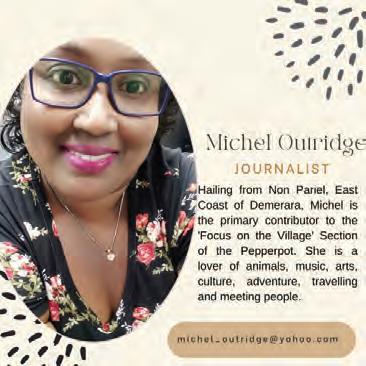

nities in the city. He r emembered clearly, as if it were yesterday,

that on September 1, 1979, they were living in Laing Avenue when their house was completely destroyed in a fire.
He came from a single-parent home with nine other siblings. He and his brother Mark, from birth, suffered from a condition— Stargardt’s disease (juvenile macular degeneration)—in which they do not have sight in both eyes.
Robindra added that they relocated to Albouystown, another rough neighbourhood, renting a small one-bedroom apartment and sharing washroom facilities with others in the yard under dire conditions
He related that the yard had a standpipe, and the situation was unavoidable. To support 10 children was not easy; his mother
was a seamstress and also made cakes to sell since their father died when he was just one year old.
Robindra disclosed that they moved to Guyhoc Park, another city ward, and their life improved a bit when his brother had the opportunity to migrate, changing their lives for the better.
Today, his mother lives in Florida, United States of America, and she is 82 years old.
Robindra returned to Guyana three years ago, renting an office in Diamond to facilitate the establishment of The Butterfly Project.
“We don’t give fish to people. We believe in equipping them with the tools to go and catch the fish for themselves. That is our aim with the project—to make people marketable to earn,” he said.
Although The Butterfly Project is 100% funded by his brother Mark, they have a board of directors— five persons—for transparency and accountability, and projects are approved by this body before they are implemented.
Robindra told Pepperpot Magazine that he is here in Guyana to run the affairs of The Butterfly Project as the on-the-ground person, while his brother Mark is based overseas.
Mark Ramnauth
Mark Ramnauth is the driving force behind The Butterfly Project, whose story is nothing short of in-
Understanding the importance of Autism awareness and support

By Shaniya Harding
WHEN Rosanne Farley’s daughter was diagnosed with autism in 2010, she found herself in unfamiliar territory. At the time, there were few resources available in Guyana for children on the spectrum. Determined to give her daughter the support she needed, Rosanne took it upon herself to
learn everything she could about autism. This journey led her to create a support group for parents, which later evolved into Early Childhood Services Care Centre; a centre dedicated to helping children with autism. Today, her work continues to transform the lives of families like Shamar Wilson’s, a father advocating for greater
awareness and acceptance of autism. Their stories highlight the importance of early interventions, community support, and the need for better understanding of autism in Guyana.
Recent years have seen massive changes and developments in our understanding of autism. In Guyana, however, there are still hurdles with diagnos-
ing, understanding, and communicating with those on the spectrum. In 2010, when Rosanne’s daughter was diagnosed, there were little to no resources, groups, or p laces that Rosanne could turn to. Recounting the earliest signs of autism in her now 16-year-old daughter, Crystal, Rosanne stat-
ed, “Crystal wasn’t responding to her name, had poor eye contact, and had a speech delay." With no existing interventions available, she committed herself to learning as much as possible.
Rosanne attended every training session, conference, and Online course she could find in an effort to under-
stand the little-talked-about topic of autism better. "I put my life on hold to help her, and I do not regret making that choice," Rosanne shares. The results were beyond what she had imagined, and her daughter flourished, becoming better at communicating
TURN TO PAGE IX

By Shanaiya Harding
AT 29, Rovindra Persaud is on the brink of what he hopes will be a new chapter, not only for himself but for all Guyanese creatives.
A poet, actor, and spoken word artist, Rovindra’s journey has been anything but simple. From street games in Better Hope to moving stage performances and spontaneous spoken word poetry at public events, he hopes to inspire other young creatives with his passion, improvisation, and deep, unapologetic belief in creative expression.
In an interview with Pe pperpot Magazine, Rovindra shared that while his childhood years in Kitty saw him surrounded by family and friends, his later years in Better Hope, although impactful, weren’t always smooth sailing. “Living in Better Hope was a little dif ferent, in the fact that I had to go now and make new friends.” He further added, “We would often make new friends by playing sports in the street; pl aying games in the streets with the other kids and so on.” Being one of the older kids on the block, leadership fell naturally into his lap. “Me and my cousins, some sort of onus of responsibility was on us during that period for playing,” he shared. Creativity, however, was always part of the equation for Rovindra. From early roles in school plays to being described as “expres -
poet and actor says he is inspired by society

sive” and having the gift of the gab, it was clear that Persaud had something that drew people in, and made them listen. The pivotal moment came when Ms. Simone Dowding, a scout’s grandmother, cast him in a play.
Though he joined the National Theatre Arts Drama School (NSTAT), he didn’t complete it in the traditional sense. “It was one of their pilot projects. I never actually got my certification or completion.” But for him, that wasn’t the point. “It was more of a networking and capacity-building exercise. I was doing it for the intrinsic value of it,” he stated. That intrinsic value paid off. Rovindra was a favourite in Guyana’s Drama Festival, winning Best Supporting Actor in a short drama for his role as a pastor in Sonia Yard’s play.
More recently, he took on the role of Jules Pereira in A Pleasant Career, an eccentric piece that demanded both narration and presence, both of which Rovindra brought to the stage. “My character would have served as a transition character. That helped to describe what was happening; set the scene and kind of summed it up.” Though he didn’t walk away with awards this time, audience members and even literary critics praised his performance.
Yet, Rovindra’s artistry goes beyond the stage, while his spoken word’s roots run
By Shaniya Harding
For many people, the idea of a good story and a sweet treat go hand in hand. But it’s not every day that these two things are coupled together in a business. Jarryl Bryan has always been a storyteller. From submitting short stories to international literary competitions to dreaming up Caribbean-set plots long into the night, he knows what it’s like to be a creative with few platforms to grow. But when he decided to take a leap into entrepreneurship, he didn’t follow the typical path. Instead, he blended passion with purpose, cake with craft—and launched Dessert Tales GY, a hybrid business that brings together delectable baked goods and original stories by Guyanese writers. As he shared with Pepperpot Magazine, “What we do—it’s a bakery, and what you would call a magazine, a literary magazine, only it’s online,” Jarryl explained. He further shared, “It’s kind of like a hybrid business. Customers that purchase our products— each of our products on the packaging has a QR code. They scan the QR code, they’re directed to our website, where we host short stories from creative writers,” he said.
It’s a unique concept—desserts paired with digital literature— that delivers more than just a sugar rush. Each cheesecake or cinnamon roll supports a grow ing community of writers, giving them visibility and pay in a landscape that often overlooks the literary arts. Sharing his
personal journey as a Guyanese creative writer, Jarryl stated, “I’ve been a creative writer for years. One of the problems I’ve always faced is the lack of paying markets, especially as a Guyanese creative writer. So I came up with the creative writing side of the business as a way to support Guyanese creative writers and to help build a platform and a supportive community for writers,” he said.
True to his mission, Dessert Tales GY only accepts submissions from Guyanese or Caribbean writers—and Ja rryl ensures they are paid. “One of the things I insisted on is that every story we purchase has to be from a Guyanese writer, and it has to be a Guyanese setting or at least a very Caribbean setting. We pay comparative market rates for what is essentially a starter, because the business is relatively new,” he shared. But this venture isn’t just about words—it’s also about flavours. “Baking is one of my passions,” Jarryl shared. “I studied it at Skills Academy. I came up with the idea to blend both businesses, because the baking—the selling of the products—would help with the distribution aspect of the short stories. We want Guyanese to see what Guyanese creative writers have to offer,” he said.
The menu itself is enough to draw any sweet tooth, with cheesecake, cookies, cheesy cornbread, and cinnamon rolls all available with customisable toppings. Customers even get to make requests—pepper, no pepper, cheesy
or classic. As Jarryl explained, “Our menu and orders are customisable. Like sometimes I would get artists ask-
ing me to exclude pepper, include pepper, you know,” he further added, “And we encourage people to like
and follow our Facebook page, Dessert Tales GY. We have our menu there. Also, we post our stories there.
There’s no paywall. You want to see what creative writers can do, you’re free to go on
TURN TO PAGE X
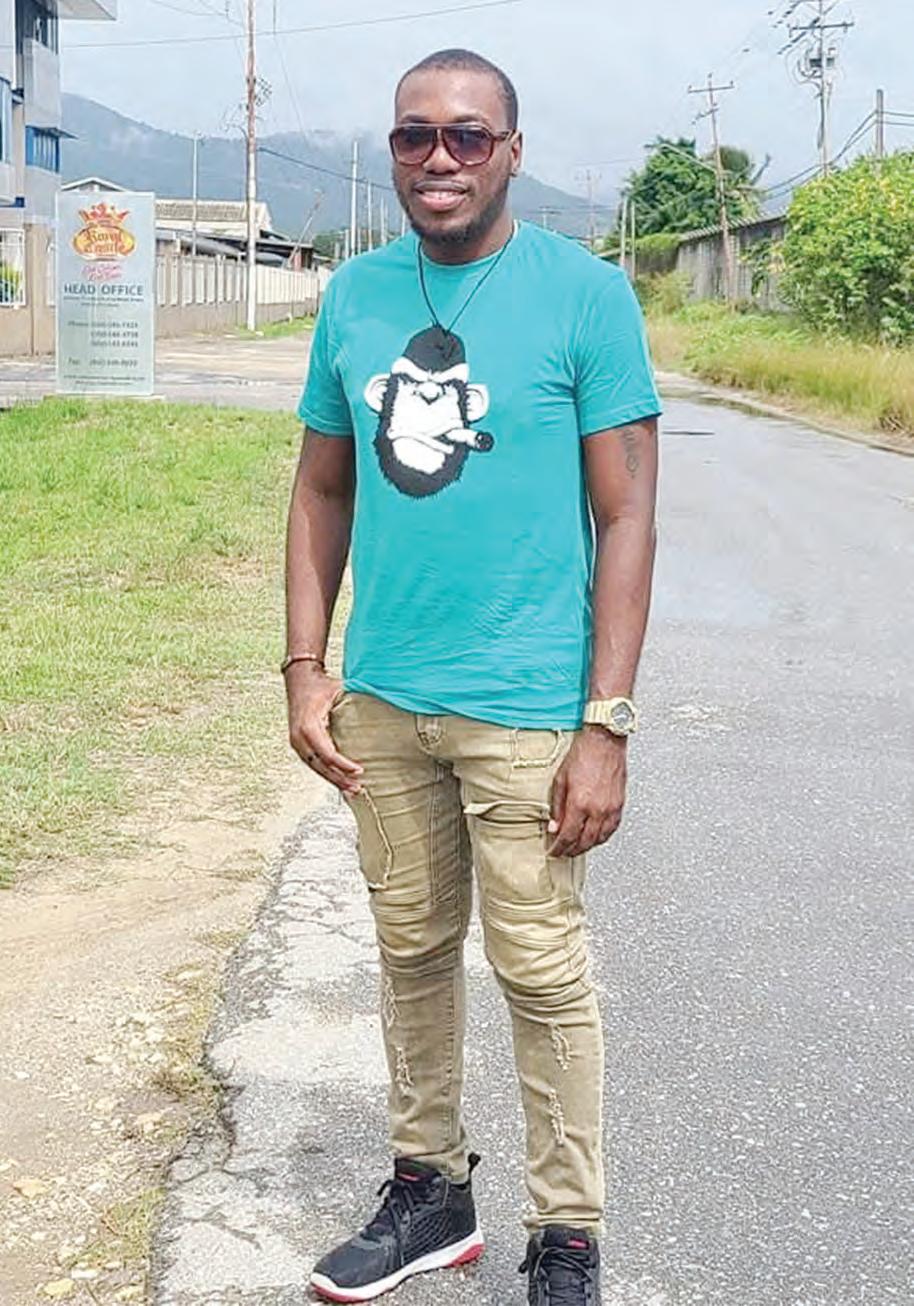
By Shaniya Harding
FROM school uniforms and scrubs to nightgowns and children’s c lothes, each piece at the ‘Asking for It’ Exhibition tells a story and, for most people, elicits
ration from the ‘What Were You Wearing?’ exhibitions in countries like the United States and the United Kingdom, ‘Asking for It’ featur es the stories of sexual assault survivors, accompanied by the arti-
April 1 to 7, the exhibition features a total of 12 survivor stories and five excerpts on the laws surrounding sexual assault and rape. By showcasing the experiences of women and girls, some as young as seven years old, the
It” Exhibition Soc ial Development Director of the Imperial House, Jairo Rodrigues, shared in a talk with Pepperpot Magazine about the e xhibition's origins and the importance of bringing this conversation to Guy-
ilar exhibitions in the U.S. and the U.K. that aimed to challenge victim-blaming narratives. His experience studying in the U.K. further reinforced the need for such an initiative in Guyana. “And when I was in the U.K. studying for
gency of the issue, Jairo pushed for the exhibition’s launch, seeing how the idea could be applicable to Guyana. As he shared, “After that experience, I went to the directors and I’m like, we need to fasttrack this exhibit. April is

strong emotions. Hosted at the Umana Yana, the exhibition is a collaborative effort between the Ministry of Human Services and Social Security and the non-profit organization, the Imperial House. Drawing inspi -
cles of clothing they were wearing at the time.
A first of its kind, the ‘Asking for It’ exhibition seeks to boldly highlight the prevalence of victim-blaming within our society, particularly in Guyana. Running from
exhibition aims to leave visitors unsettled and reflecting on the critical question: Is anyone who is abused ever truly ‘asking for it’?
Concept and Development of the “Asking for
ana. “So for ‘Asking for It,’ I wrote the concept, I designed the programme, I reached out to partners—being the Ministry of Human Services—and together we hosted the exhibition,” he shared. The idea was inspired by sim-
my Master’s, there were a lot of campaigns about sexual assault, particularly warning students about the dangers. And I’m like, you know, we don’t have that at all back home,” he stated. Recognising the ur -
coming up, April is Sexual Assault Awareness Month. So from then, we started working on putting the exhibit together, which involved collecting more stories from candidates in our programmes. We



FROM PAGE II
spirational as well as humbling.
He recalled growing up as a ‘scheme boy’ in the challenging neighbourhoods of West Ruimveldt, Albouystown, Guyhoc, and Laing Avenue in South George-
town, Guyana. Mark was the oldest of ten children raised by a single mother. Despite these hardships, he always felt fortunate and bles sed to have the unwavering support of his family, who are close to this day.
Mark’s early years were marked by resilience and determination. He attended St. Pius Primary School. As a child, he faced additional challenges due to his blindness from Stargardt’s disease (juvenile macular degeneration).

But he never let that physical disability hinder him—nor did his brother, Robindra.
Mark later migrated to the USA and pursued higher education with an unyielding spirit. He was fortunate to earn a Master’s Degree from New York University, an achievement he attributes to the collective support of his family and community.
Mark’s career has since been dedicated to helping others, especially those with disabilities, succeed in their endeavours. Being blind has figuratively opened his eyes to the disadvantages faced by people living with disabilities.
Mark pursued professionalism and has ventured into various entrepreneurial pursuits, including building a successful real e state business and owning two hotels in his journey to success.
However, his heart has always been set on giving back to his roots. In 2024, he launched The Butterfly Project—a not-for-profit or ganisation focused on poverty alleviation, community development, and independent living for people with disabilities in Guyana.
Mark’s commitment to The Butterfly Project is deeply personal. He has invested his own resources to ensure its growth and sustainability. This project is 100% funded by Mark alone.
The project’s launch has been a family affair, with tremendous support from his loved ones. His brother Rob-
indra, now retired, has volunteered to help administer the project’s initiatives in Guyana.
With strong backing from the local community and plans to collaborate with private and public partners, Mark is dedicated to scaling the impact of The Butterfly Project.
His story is a testament to the power of perseverance, the importance of family support, and the belief that everyone—regardless of their beginnings— can make a difference.
Transforming Lives and Building Better Futures
The Butterfly Project is a family-funded, not -for-profit charity in Guyana dedicated to three core goals:
• Poverty alleviation
• Community development
• P romoting independent living for people with disabilities
Through collaboration with organisations, leveraging existing initiatives, and innovating new programmes, we forge a brighter future for underprivileged individuals and communities. Together, we make a significant impact on their lives, paving the way for a more inclusive society
Mission of The Butterfly Project
The Butterfly Project is dedicated to m aking a meaningful difference by directly tackling poverty.
The mission is to provide support that not only addresses immediate needs but also lays the groundwork for lasting econom -
ic empowerment and self-sufficiency.
By focusing on sustainable solutions, we aim to uplift individuals and communities out of poverty.
The impact of our work is measured by tangible improvements in economic status, increased opportunities for income generation, and the enhanced well-being of the communities we serve. W here possible, we will collaborate with both public and private initiatives to broaden our impact.
Current Initiative
This year, the Butterfly Project launched its very first formal initiative in collaboration with Food for the Poor (FFP).
Together, the two entities established the Youth Enhancement Project (YEP) which aims to build the capacity of 100 youths in the South Georgetown area to identify and take advantage of locally available job and training opportunities. The main objective is to reduce the unemployment rate of youths in the targeted area.
The project involves providing support and training to unemployed, at-risk youths between the ages of 18 and 35 over 12 months.
Youths will be given the opportunity to register for the project and participate in s everal training activities and support pr ogrammes geared towards strengthening their capacities to pursue job and training opportunities.
FROM PAGE III
and social interactions. Inspired by this progress, she extended her knowledge and support to other parents in similar situations. "I started reaching out to parents, doing screenings, and providing support," Rosanne shared.
Recognising the overwhelming need for structured intervention, she founded Early Childhood Services. Officially launched on Autism Awareness Day in 2024, the centre offers speech and behavioural support for children on the spectrum. "A little child came to the centre after being dismissed from a school because of his behaviour. In less than three months, he was talking, interacting, and doing so well," Rosanne stated.
Although not a medical endeavour, Rosanne works with children and parents to better understand each other, using techniques she has learned on her own parenting journey. She believes that while awareness is crucial, action and acceptance are equally important. "We need more than awareness. What we need to see is accep -
tance and action," she told Pepperpot Magazine. As she explained, while parents, families, and sometimes even friends can be supportive, more inclusive spaces and training teachers to support autistic children better are essential steps towards true acceptance.
For Shamar Wilson, raising a child on the spectrum has been a journey of both learning and advocacy. When his son was first diagnosed, he felt lost. "I had no options or even ways to help him, so I did my own research on autism," he shared. Determined to understand his son’s needs, he focused on communication, encouraging his child to express himself rather than assuming his needs.
Through his own research and working alongside Rosanne, Shamar has been able to understand his son better, learning new communication techniques. As he stated, "Today, my son has become very communicative. He voices what he likes, what he doesn’t like, what he wants," Shamar shares. Watching his son develop

uni que interests and preferences has been an incredibly rewarding experience. "Some parents might worry when they see their child not advancing as quickly as others, but I’ve seen my son excel in ways I never expected," he shared.
Shamar believes that the biggest challenge in Guyana is the lack of proper training for educators. "Schools need better systems for interacting with autistic children," he says. Misconceptions about autism persist, and he has encountered many
people who underestimate his son’s abilities. "Many assume children on the spectrum are ‘retarded’, but that’s not the case. My son is incredibly capable; he just learns differently," he shared.
With the emergence of new centres and organisations dedicated t o autism education and awareness, Shamar says he is optimistic about children like his son. Shamar has picked up the mantle to educate other parents, t hough he acknowledges that not everyone is ready to accept the
possibility that their child may be on the spectrum. "It’s difficult at first, but once you put in the work, it gets easier. You don’t have to be afraid," he said. Shamar says that his dedication has paid off. "For Aiden, making eye contact or even physical contact with me or his mum was once impossible. But we worked with him, and now, things have changed. It’s different, but it’s worth it."
Both Rosanne and Shamar agree that while there has been progress on autism
awareness in Guyana, much more needs to be done. Acceptance means fostering inclusive environments where children on the spectrum can thrive, and action requires equipping teachers, parents, and the br oader community with the necessary tools to support them. Through advocacy, education, and community efforts, the journey towards understanding autism c ontinues, one child at a time.

FROM PAGE IV
deep. Recounting how he discovered his love for words, Rovindra shared, “It started a long time ago in school. You’d be making jokes with your classmates, telling each other about their mothers or their grandmothers.” This childhood game is where he learned that he could make an impact with his words. “I had the ability to string these words together in a funny way, or sometimes a poetic way. Or so metimes a delivery punchline way,” he recalled. But what he delivers isn’t textbook poetry. “It came from intrinsic feelings; it
came from wanting to say something about something,” he shared. That “something” often involves the pulse of society and social topics. At one event, where Rovindra was just a helper—until inspiration struck. “I stood there, and I watched the programme as it was going on. And I wrote a poem, while I was watching it.” And when the mic opened, he stepped forward. “People were very surprised and shocked. They were like, how could I have written this? Describing stuff that was happening in this thing at the time.”
Rovindra further shared that his biggest inspiration will always be his opinions and societal views. “To be honest, it all started from me having to describe how I feel about society, and some of the inequities presented in it. People listen. People listen, when you say poetry or music.”
Rovindra’s preparation before stepping on stage is immersive and deeply reflective. “Before I am even a part of a production, I need to know, first of all, what’s the tone? Who’s the director? What’s the production?” he shared. And while it takes time for him to fully con -

nect to a role, once he does, it’s an incredibly emotive and immersive experience for the audience. “I don't ever capture the essence of the character until like one week before the performance,” Rovindra shared.
He described it as a layering process; learning lines, movements, m otions, until he can feel the character in his bones. When he played the fool in Twelfth Night, the Shakespear-
ean English posed a challenge, until he approached it like a poem. “I started to apply my poetic skill, and look at the literature of how he was delivering each line. A week before that performance, I understood the character,” he said.
Today, Rovindra is also bridging gaps in other sectors through his job as a Quality, Health, Safety, and Environment (QHSE) consultant. Moving
forward, Rovindra hopes to see more young creatives venture into Guyana’s many artistic spaces. For Rovindra Persaud, art is not a role to pl ay; it’s a way to exist. Whether in rhyme, rhythm, or roleplay, his work is a mirror held up to society; honest, engaging, and sometimes uncomfortable. But that’s exactly why people listen.

had a public call and also gathered experiences from the ministry’s 914 hotline number,” he shared.
The reality of sexual harassment and victim-blaming culture
T he exhibition sheds light on the deeply ingrained culture of victim-blaming, which is all too common in Guyana. As Jairo shared, a particular incident that happened during a workshop further
inspired both him and the Imperial H ouse to make the project a reality. “In one of our programmes, one of our candidates came to me, and she was in tears,” Jairo recounted.
“She was in a bus on her way to the programme and a man kept touching her. And she was vocal about it, as we taught them to be:
‘Please stop it. I don’t feel comfortable. Please keep your hand to yourself,’” he said.
However, the re -
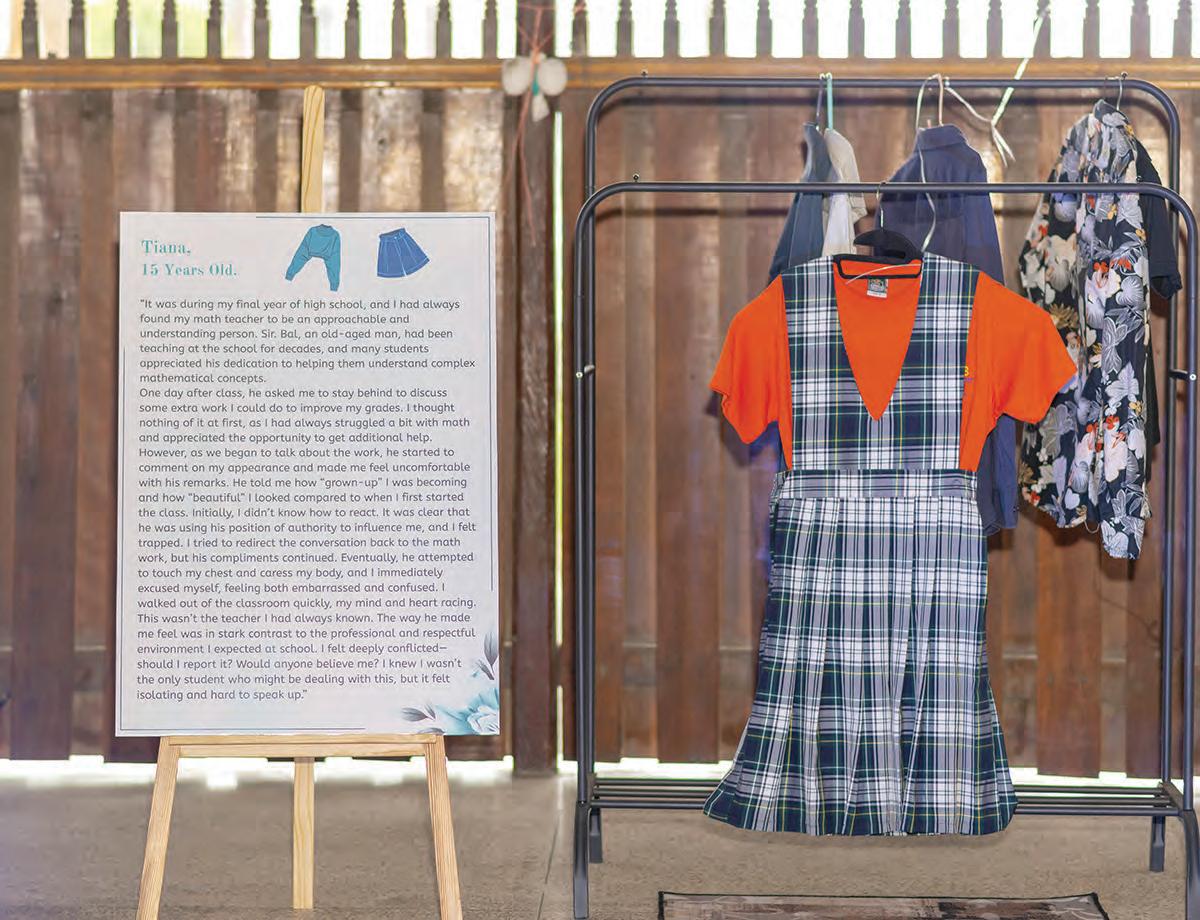


sponse—or lack thereof— from the other passengers was just as disturbing. “But what hurt her the most was no one in the bus said anything to defend or protect her. And it was a bus with a lot of women in it,” he said. Even worse, when she confided i n a friend about the incident, she was met with blame rather than support. “Weeks later, she confided in a friend. And the very first thing the friend a sked was, ‘What were you wearing? What did you do that made this man want to do this? What was so inviting?’” he stated. This response reinforced the harmful narrative that survivors are somehow responsible for the violence inflicted upon them. “So again, the conversation now has to do with public discourse, which is, we need to stop
blaming people for their experiences of sexual assault and rape. We need to dispel victim-blaming. And you see it all t he time,” he said. Jairo also believes that men should not be left out of this conversation, saying that young men and boys too have a role to play in deconstructing the idea of victim-blaming.
The exhibition’s impact and the survivors’ stories
The stories featured in the exhibition were gathered with the full consent of the survivors, with careful consideration of how their narratives would be shared. “For us, on our public drive to our members’ partners—well, basically the public—there wa s a specific question to describe in detail what you were wearing,” Jairo shared. He emphasised that a great deal of care was taken in handling these
sensitive stories. Many of the names have been changed to protect the survivors, and Jairo and the Imperial Hous e worked alongside survivors in skillfully and artistically recreating the clothes featured in the displays.
One of the most striking aspects of the exhibition for visitors is the presence of school uniforms on display, highlighting the unique trauma faced by young survivors. As Jairo shared, “Anytime someone is sexually assaulted in the clothing they’re wearing, their instinct is to throw it out or to burn it. If someone’s been raped, their i nstinct is to go shower, bathe, and they cry and they cry and they just discard those clothes,” he said. He further added, “Girls who were in uniform—and school-age girls—do not have that option.” This daily confronta-


This aspect of the exhibition tells the story of 31-year-old Amanda, and her story of surviving an abusive relationship
tion with trauma is a stark reality for many survivors, one that the exhibition powerfully illustrates.
The ‘Asking for It’ exhibition serves as both a powerful statement and a call to action, challenging societal norms and urging visitors to rethink the narratives around sexual violence. By amplifying the voices of survivors and shedding light on the pervasiveness of victim-blaming, the exhibition is a step toward changing the conversation and fostering a culture of support rather than scrutiny.


I HAVE covered the impact of drugs on my generation from the late ’70s onward—the then death of a colleague named Tyrone and the hallucination that overpowered him to commit a heinous act. And the many others who had conceived
an erroneous interpretation of Rastafari and had destr oyed themselves. I knew then, even as others followed. I was awakened to the fact that some social manifestations were not clarified in all their aspects. With research, I hinted at an aware-
ness that this was not a cultural pr esence that would—beyond the making of wealth for some—positively affect the health and consciousness of the next generation. Today, I look with fear at the youth who are enveloped by addiction. I dread that
this scourge is capturing a new generation. I walk to execute most of my chores, so I witness their presence. Most people look the other way helplessly. This problem can be addressed by some means, but speaking publicly about something you would like to
do but cannot do now because you don’t have all the means could very well be a regretted betrayal of one’s intention—follow ed by a twisted version of the intended, to serve at times a different purpose. So I’ll have to work on it until I can release the intended effort.
I’ve covered several articles on the decline and disappearance of past institutions of national resources and employment—referred to as the sisters—that left thousands helpless. What am I speaking about? The George -
TURN TO PAGE XIX


I AM a car – a new model Toyota Carina 212 –dark and shiny with glistening rims, bright lights and a smooth-running engine. The auto sales store advertised me as a classic car, but buyers preferred newer models. Then, one day, months later, a middle-aged gentleman walked into the auto sales store looking
for a simple car in excellent condition that he could drive with ease and in comfort.
I l iked him from the moment I saw him because he had a pleasant personality and a smooth voice. He did not see me, though, at the spot where I had been shifted to until the car salesman showed him several other models.
The moment he stopped by me, he inhaled quietly and put his hand on my hood, saying, “This is it. I like this one.”
My mechanical heart gave me a rev of joy, and that’s how my story started.
I loved every day driving my owner, under his love and care, and I enjoyed those days when

his wife, Catherine, travelled with him. She had a sweet voice and a cheerful laugh. They were such a wonderful couple—it warmed my heart. I was there with them as they grew older, a silent wit-
ness to their beautiful love story
Then the unexpected happened!
One late night, a little over a year later, Stephan fell ill and had to be rushed to the hospital.
His son, Damien, drove as his father lay in Catherine’s arms, gasping for bre ath. A surge of fear passed through my metal body, and four hours later, I saw Catherine coming
TURN TO PAGE XVI

FROM PAGE XV
out of the hospital, crying, assisted by Damien, who had a grieved look on his face. As he walked her to me, two other cars pulled up with relatives, and one man drove me home as Damien sat with his mother in the back, comforting her.
I knew my owner had passed away. I knew a good man had gone home and parked in the shadows under the oak trees at the turn of the driveway. I mourned his passing.
Family and friends came and went, but I stayed parked until the day of his funeral when my body was cleaned and

polished. I had to take the family—his wife, son and daughter—because they knew how dear I was to him and how much he loved me.
For a long time after the funeral, there was sadness as the family tried to c ome to terms with his passing.
I missed him so much myself, and though cars don’t cry, my engine,
which was my heart, revved with sadness.
A driver was hired to drive me when Catherine needed to go somewhere, which wasn’t often, and Damien and Stephanie drove me sometimes. But another setback happened when Catherine fell ill and had to go overseas for treatment. Stephanie had already left to study overseas, and Damien

was busy with his job as a pilot.
Once again, I stayed parked under the oak tree, dust and fallen leaves all over me, and a decision was made to sell me. That broke my heart, for I was with a family I loved. But what could I do? I was just a car – I had no voice,
simply at the command of those who drove me.
The dreadful day came when the new owner came for me. Damien seemed hesitant to hand him the keys, but the sale agreement had been signed. He stood there as I was driven out of the yard, a grieved look
on his face. I think I saw tears in his eyes, and if I could have cried, I would have. My thoughts as the new owner, a young mixed-race male, drove along the highway were, “If only Stephan hadn’t died.”
I didn’t know how
TURN TO PAGE XVII
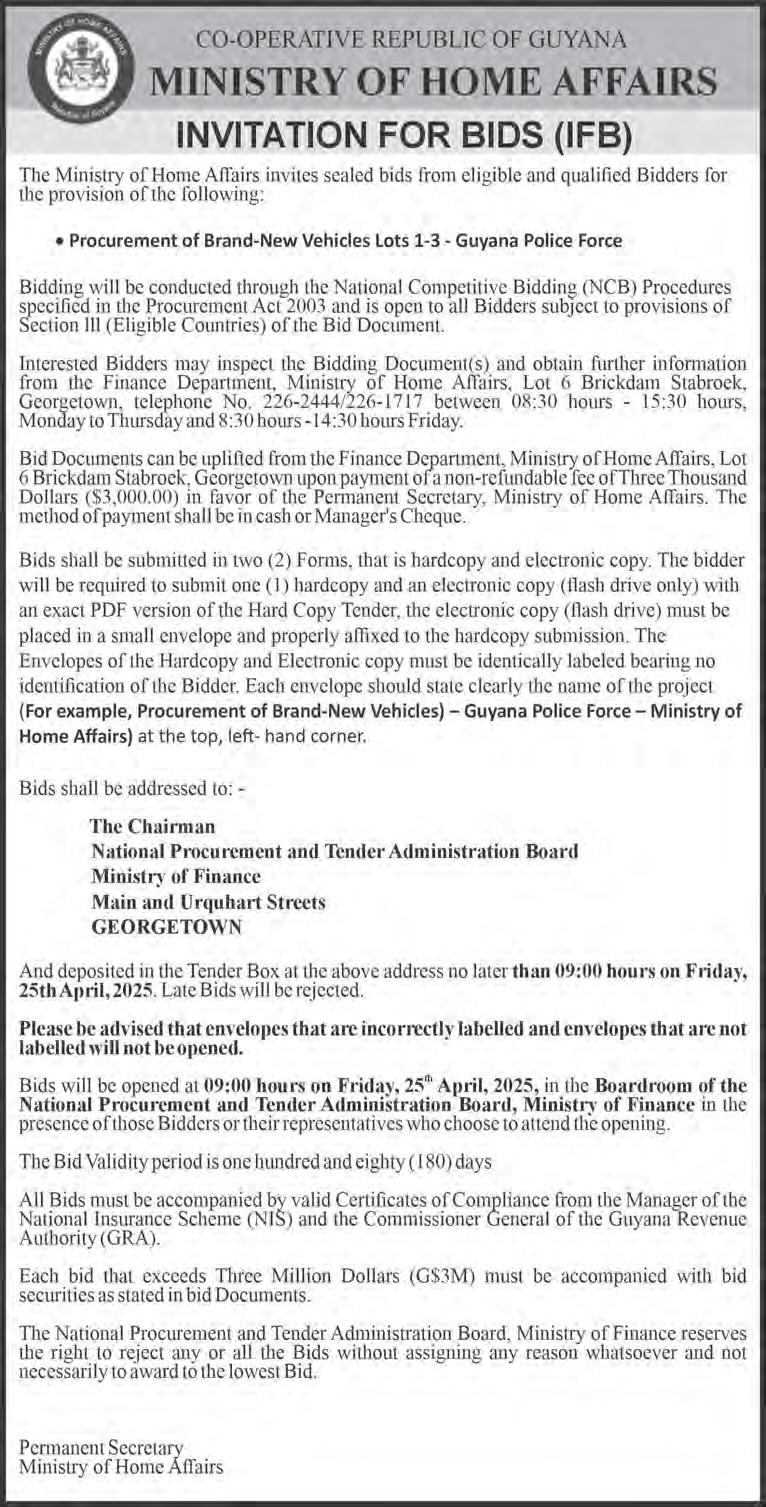
FROM PAGE XVI
things would be for me now.
And it started off badly!
The young man was driving above the speed limit, and soon the cops stopped him. He was given a speeding ticket that, I could tell, infuriated him from the swear words he used as he drove away. The next stop was at a beer garden, and his friends—happy for him that he had bought a car— poured beers on my clean, shiny hood.
Life became a nightmare for me, with no care nor special love, just a car to drive around. The young man was wild, and after a few accidents— not too serious—I was sold again. This owner, another young man, was worse, for with him, there were drugs, loud music, drinking and other things in the car that made me feel filthy.
That came to an end after a police chase due to criminal elements, and I was hidden in a dark garage for a few months. Strange men worked on my body to change my outlook, and I was sold again.
All the time, I kept hearing my owner Stephan’s voice and felt his gentle hand on my body, and that kept me going.
After a few months and a new outlook, I was sold again, this time to a middle-aged man who had a family. That, for me, was a great relief, and after a long time, I felt safe.
The man’s wife and young children were thrilled that they had a new car. I had a new family, and my new owner loved and cared for me. But things changed when he allowed his friends to drive me, and soon, I was dusty and dirty again. He often expressed his love for me, but he didn’t care
for me the way he should have, and the accidents made by his friends left my body bruised, dented and scarred.
His wife, a quiet-spoken woman, was not pleased with what was happening to me. She spoke to my owner, who would haughtily shut her up.
As time went on, I felt sorry for her because she didn’t seem happy, and during many drives, he did not speak to her. That was so different from Stephan, who always talked and laughed with his wife.
Then, one day, when I thought things couldn’t get any worse, he lent me to a friend to work as a private hire taxi on the road. That was where it ended for me, for when I broke down and couldn’t work anymore, my owner never took me back. He gave me to another friend to use for parts, for he had acquired a new company vehicle along with a driver
That was the day when I should have died—but I didn’t.
I was sitting in a backyard under a huge mango tree, abandoned in the sun, the rain, the falling leaves and rotten fruits, and I wondered, “Could someone from my first family come find me?”
How long I was left there, I didn’t know. Then, one day, I heard a familiar voice, and my mechanical heart revved a beat. A hand touched my hood, a touch I knew so well.
It was Damien— Stephan’s son.
How did he find me?
He was telling the man in whose yard I had been kept, “I will take Bethany home. We made a grave mistake to sell her.”
He brushed away the dust from my hood and said quietly, “I am taking you back home, for it’s my father’s wish.”
I didn’t understand,
but I was happy to be going back home to my beloved family. After months of working and putting me back together with new parts and being sprayed over to my original colour, I was ready to re turn home—spanking new.
Catherine had grown really old, but her charming laughter and the sparkle in her eyes made me so ha ppy. Her daughter chauffeured her out, d riving me everywhere she needed to go. Then, months later, one late night, she had to be taken
to the hospital. Hours later, Damien and Stephanie returned home alone with me.
That night I understood what Damien meant wh en he mentioned his father’s wishes, after he said, “Mum had missed you so much, and one
night Dad dreamt her and said, ‘Tell Damien to find Bethany.’”
If, as a car, I could have cried, I would have. My mechanical heart filled with joy— for I was home, now with my loving forever family, the car I am.





FROM PAGE XIV
town Waterfront, Bauxite, the Sugar Industry, a s well as the private sector that vanished during the impact of the global oil crisis years, etc. So, where must Guyana’s skills turn to bury the rush of anxieties? Thus, many have turned to selling or using narcotics.
Fr om my practical experiences, as the Jimmy Cliff song echoes in my memory, “It’s a hard road to travel, it’s a rough, rough way to go, but I can’t turn back…” A friend gave me a drop home, telling me of the usage of steel wool by addicts in their smoking habits, including a relative of his, whom he doesn’t know how to deal with. It’s mind-blowing. Metallic powder or grains and
body parts don’t work together—the human body will always lose to such lethal embraces.
I’ve written about seeing people I know— like a once-youth of Yarrow Dam whose body had become twisted, and he had aged beyond his years. I haven’t seen that brother f or a while. I want to keep thinking that the better intercepted and he’s okay, rather than what may be the more likely, as I’ve witnessed with others.
The hard fact is homes can’t easily adjust to the upsurge of da ily mental turmoil. I’ve been there—confronting a mindless eruption akin to the character in The Exorcist—with a constant challenge of abrupt, what can only be called

eruptions of a dual personality that can only be subdued by equal force. To contemplate the torture of wounded internals rests beyond guesswork.
“We, the reader and myself,” can only contemplate that in the holocaust of addiction—which I have
witnessed as a parent—there is something in the human spirit that, if harassed e nough, can emerge, and with an urge of defiance, allow sanity to prevail through our efforts, even as it is quoted, “This too shall pass, despite the darkness that envelopes.”

of Post-it notes when my projects take a turn. Post-its were accidentally invented by a chemist, Spencer Silver, when he was asked to invent the strongest adhesive. He ended up achieving the opposite—the least adhesive—and his ‘failure’ transformed the paper industry.
Shift your language. They say to be careful what you say because you are listening. Many will say, “I failed; I’m not good enough; this can never happen again.” You would be absolutely amazed at what would instead happen if that became, “I tried something new, and it didn’t work. What can I learn from this experience that will help me next time?” This change would bring focus on the action and the opportunity to improve rather than on the negative judgement of yourself.
I am often asked how to best deal with negative feelings when failure inevitably comes along, and my advice has never wavered. Those who tend to take failure the hardest are those whose self-worth is closely linked to their achievements; their failures feel like personal attacks on who they are. There needs to be a separation of our overall self-worth from our external achievements, and instead link it to our internal values such as kindness and empathy.
There is a secret to not being bothered by failure at all, and I’m going to share it with you. It’s to focus on your efforts more than the results. If you are simply proud of consistent, progressive steps, regardless of the outcome, you can never be disappointed. We’ve been condi-
tioned to focus solely on the end result—getting the promotion, finishing the project, or achievi ng the perfect outcome. While results are important, they don't reflect the growth and learning that happen along the way. Results are influenced by so many factors, some of which are beyond our control (like timing, external circumstances, or other people’s actions). Effort, however, is completely within your control. It promotes consistency and reduces anxiety, as this view encourages one to show up and put in the work each day. Even if things don’t go as planned, you will know that you gave it your all and that your own effort fuels the desire to keep going, even when results are not immediately visible. It further directly enhances self-worth as your value isn’ t contingent on a specific outcome; it's about showing up, working hard, and continuously growing.
Example in Action:
Let’s say you want to improve your public speaking skills. If you focus solely on the end result —delivering a flawless speech—you might feel discouraged by every mistake or imperfection during your practice sessions. However, if you focus on the effort of practising regularly, refining your skills, and making gradual improvements, you'll appreciate the progress you’re making and be more motivated to keep going, even if the end result isn’t perfect. If everything were easy and came without struggle, success would feel less meaningful. It is the challenges we face and the failures we experience that make the victories even sweeter.
Failure’s biggest silver lining for me is the collaboration it promotes. When something doesn’t go my way, I very often open the door to collective problem-solving, bringing together those in my life with different areas of expertise that I believe can help me
tackle the problems. The advice I ask for and receive fosters a safe and nurturing environment, strengthening my social circle.
As John Maxwell said, “Fail forward.”
If we truly think about it, failure is simply a process of elim-
ination. We use this daily as a strategic way of coming to a solution and winning. ‘Failure’ is literally just finding different outcomes.
In many ways, i t offers the opportunity to grow in ways that success alone cannot.
You learn about your capabilities, your limits, and what you truly want. Each time provides an opportunity to refine techniques, ask new questions, and approach problems from a different angle and mindset. It isn’t the opposite of success; it’s simply a part of it.









1. Invest time in them
EVERY child needs their parents’ time during the different phases of their growth. Parents will some-
times state that they do not have enough time to spend with their children, but they must make some time since their children belong
to them. Those children were not born by their own request but by two adults of opposite genders who engaged in sexual activities.
2. Listen to and read the news with your children
Every child learns differently, and at a different speed, so parents must care-

fully assess their children and help them to learn. There is no standard formula that can be used to make all children learn the same way and at the same speed.
One good way of helping children to learn is through the news. Parents can watch, read, and listen to the news with their children. Sometimes, children may not see the importance of participating in listening to, reading, and watching the news, but as they have schoolwork or have to engage in conversation, they may see the benefit of the information they have learned.
Most news reporters and journalists are trained, so the quality of the information they broadcast helps people to learn. Adults listen to, watch, or read the news because they are trying to keep up to date with whatever is happening.
Many textbooks provide quality information for people to learn from, but because of the time it takes to produce them, they may be published long after an event has occurred. Therefore, regular watching, listening, and reading of the news are very important for people to be up-to- date on what has happened or is about to happen.
3. Invest time in social and cultural events
Children love to be entertained. It is sometimes through social activities that children learn many important things. There is so much that teachers can do to help children learn, but parents must also invest in their children’s learning. The collaborative efforts of parents and teachers will produce great children.
While governments will invest in children’s lives, there is a need for many more people to be involved in their development. Some parents believe that once they send their children to school, then that is all they have to do. However, each parent must show interest in their children’s development. People in society must play vital roles in helping children to develop. Parents must allow their children to interact with other people in society, including their neighbours.
Some neighbours may not be good to allow children to interact with them, but they are not all bad.
4. Invest in their education
When children are introduced to early learning, it can create an appetite for them to continue to take an interest in learning throughout their lives. As parents introduce their children to early learning, they may enjoy the conversations with which their children will engage them.
Early learning can be done through formal and informal options. A mixture of both is very important for children to develop. Not every child may see the importance of learning, but parents must not withhold opportunities for exposing children to learning from a tender age.
5. Invest in their spiritual life
Parents, remember that just as your children need education for their academic growth, they also need the Creator for their spiritual growth. Therefore, parents must invest time in their children by ensuring that they have an understanding of the Creator. Too often, parents expect that schoolteachers will provide all of the information that their children need, but parents also have to invest in their children’s academic, social, and spiritual lives.
Many families have family devotions, where at least one of the adults will spend time praying, teaching spiritual words, and encouraging other family members to keep their relationship with the Creator strong. It is through family devotion that some children come to have an appreciation for the Creator and other humans. Some families have standard days when all members of the family are expected to gather in one place for family devotion. Most times, family devotions are held within the home or another building within the same yard.
Family devotions are never intended to replace other religious services where devoted members will gather together. However, it allows
FROM PAGE XXIV
family members to develop their own spiritual life so that when they take part in corporate spiritual activities, they are comfortable and confident in what they have to do.
6. Invest financially in your children
It is sad to see children begging when they have strong, healthy, and wise parents, so every parent must invest in their children financially. Parents do not have
to be millionaires to invest financially in their children’s lives. Sometimes, it is the financial investment parents make for their children that enables them to have a bright future.
Life may be difficult financially for some parents. However, others can provide their children with monthly allowances. This allowance can be linked to the children having to perform certain duties, or it may be given out of the parents’ generosity.
As children grow from the infant stage to adolescence to young adults, they need money to spend for themselves. Parents might not always know their children’s taste and style, especially when they move from one stage to the next.
Children are often thankful for the food and clothing their parents have provided for them, but they may need an allowance to help them purchase things they may need when they are at school

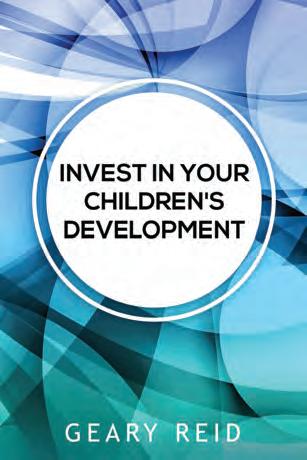
or other places.
Children with the ability to save portions of their allowance must be congratulated. Some children are wealthy today because they saved the allowance their
parents provided and looked for opportunities at a later stage to invest the money.
7. Involve children in sports
Not all children will have a desire for academics. Some may have a desire to learn a trade, and some may have a desire for sports. When parents know their children’s desires, then they should support their children in order to maximise their abilities. Parents should not encourage and support their children to do the wrong things.
Parents are sometimes so protective over the lives of their children that they do not want their children to venture out to exercise or engage in sports. Parents must be aware
that sports are also important for their children’s learning. When children are involved in sports, they become more disciplined and respect time. Some sports also help children to improve their memory of past events, while other sports cause children to think strategically because they have to assess what their opponent may want to do. For more information about Geary Reid and his books:
• Amazon: http:// www.amazon.com/author/ gearyreid
• W ebsite: www. reidnlearn.com
• Facebook: ReidnLearn
• Email: info@reidnlearn.com
• M obile #: +592645-2240



IMAGINE that you are a young child. Imagine that you are standing in the middle of a playground surrounded by dozens of your peers. The sun is beaming down on all of you, and each blade of grass quivers in the warmth of the day. You are all playing a game of ‘Tag’. Everyone seems to have adopted their own strategy to escape the touch of the c hild who is chasing them. Each failed attempt to catch an individual is punctuated by a scream
or a peal of laughter. After what seems like ages of being overlooked, the child finally catches a glimpse of you. You are standing only a few feet away from him. A quick manoeuvre on his part could easily end the game. He turns to look at you, then lunges at you. Before you even have a chance to realise it, you’ve been caught—and a strange new responsibility has suddenly been thrust upon you. All of the eyes in the playground now turn to watch you. Tag, you’re it!
This strange but exciting feeling of being caught in a game of tag is often forgotten as we grow up and enter adulthood. Like many other childhood experiences and memories, this too is packed up in a box within our mind and stored away to be analysed or reminisced over at a later time. However, for members of a younger generation, this specific feeling of new responsibility finds them sooner than they expect. It finds them in the form of responsibility
TURN TO PAGE XXX






WE again make an offering on the Guyana–Venezuela Border Contro -
versy because Guyanese must always be aware of it and never relax their
guard, since if ever they do, the treacherous and apparently demented

adversary will step up his mindless aggression, as he has been doing in a steady crescendo over the last several weeks. President Maduro and Venezuela have become universally isolated since even Russia, China and Cuba will not positively support their aggression against Guyana's territory and break international law since Guyana is an older friend of these
three nations. President Maduro and his entourage, in their isolation, seem to be afflicted with a dangerous desperation, which partly manifests itself in their making false declarations and spreading misinformation. Below, we will give a short résumé of the Controversy and the Venezuelan misinformation:
In 1831, the colonies
of Demerara, Essequibo and Berbice were united into the colony of British Guiana. The western boundaries of the colony were not properly demarcated, and in the 1840s, the colonial government engaged the German surveyor and explorer, Robert Schomburgk, to demarcate the boundary. Schomburgk duly completed his work, largely guided by the ter-
TURN TO PAGE XXXII

ritory that the Dutch had occupied, but Venezuela objected to the Schomburgk Line, claiming that it had taken in Venezuelan territory. Venezuela made attempts to have Britain and itself review the boundary, but such discussions never materialised. Venezuela then approached the U SA to take up its case with Britain. Venezuela wished the issue to be settled by Arbitration. In the 1890s, the USA put much pressure on Britain to have the Dispute adjudicated by Arbitration, with President Cleveland even threatening war.
In 1897, the Arbitral Court—with Melville Fuller, Chief Justice of the United States, and David
Brewer, also a US High Court Judge, representing the Venezuelan side, and Lord Russell and Lord Henna Collins, equally distinguished jurists, representing the British side, with Frederick de Martens, a distinguished Russian jurist, as Chairman—went to work. The archives of Britain, Holland, and Spain were thoroughly searched, and in 1899, the Arbitral Award was made as a full, final, and perfect settlement that set the pre sent borders of Guyana. Immediately after, between 1901 and 1905, the boundary was physically demarcated by Venezuelan and British surveyors. Venezuela accepted the present boundary as full, final and perfect until
1962, when Guyana was about to be granted Independence. Venezuela now claimed that the boundary was incorrect and opposed the grant of Independence to Guyana. Britain was anxious to withdraw from Guyana, and so the Geneva Agreement was arrived at, allowing for the Cont roversy to be settled after Independence, which was granted in May 1966. Between 1966 and 2018, a four-year period of negotiation was tried and failed, followed by a 12-year period of trying to get matters on the rails, followed by a long period of "Good Offices" meetings which failed to bear any fruit. The matter was then transferred to the Secretary-General of the

United Nations in 2018 so that he could prescribe a solution. He ordered that the Controversy be given to the International Court of Justice to be adjudicated; Guyana agreed, but Venezuela claimed that the Court had no jurisdiction. The Court affirmed that it had jurisdiction, and the case is now before the ICJ, which has ordered that neither party should take any action to disturb the pres-
ent status quo. Venezuela has not honoured this ruling of the ICJ but continues to carry out a series of aggressive actions against Guyana. An important aspect of its aggression is to propagate misinformation about the Controversy, and below we give four of the most used:
(i) Venezuela claims that no Venezuelan was among the arbitrators representing Venezuela's po-
sition and, as such, prima facie, Venezuela does not recognise the Arbitration and its decision. The truth and fact is that it is Venezuela which insisted on the use of Arbitration as the method of settling the Dispute, and it is they who agreed to the legal team representing the Venezuelan case, which consisted of Melville Fuller, Chief
TURN TO PAGE XXXIII
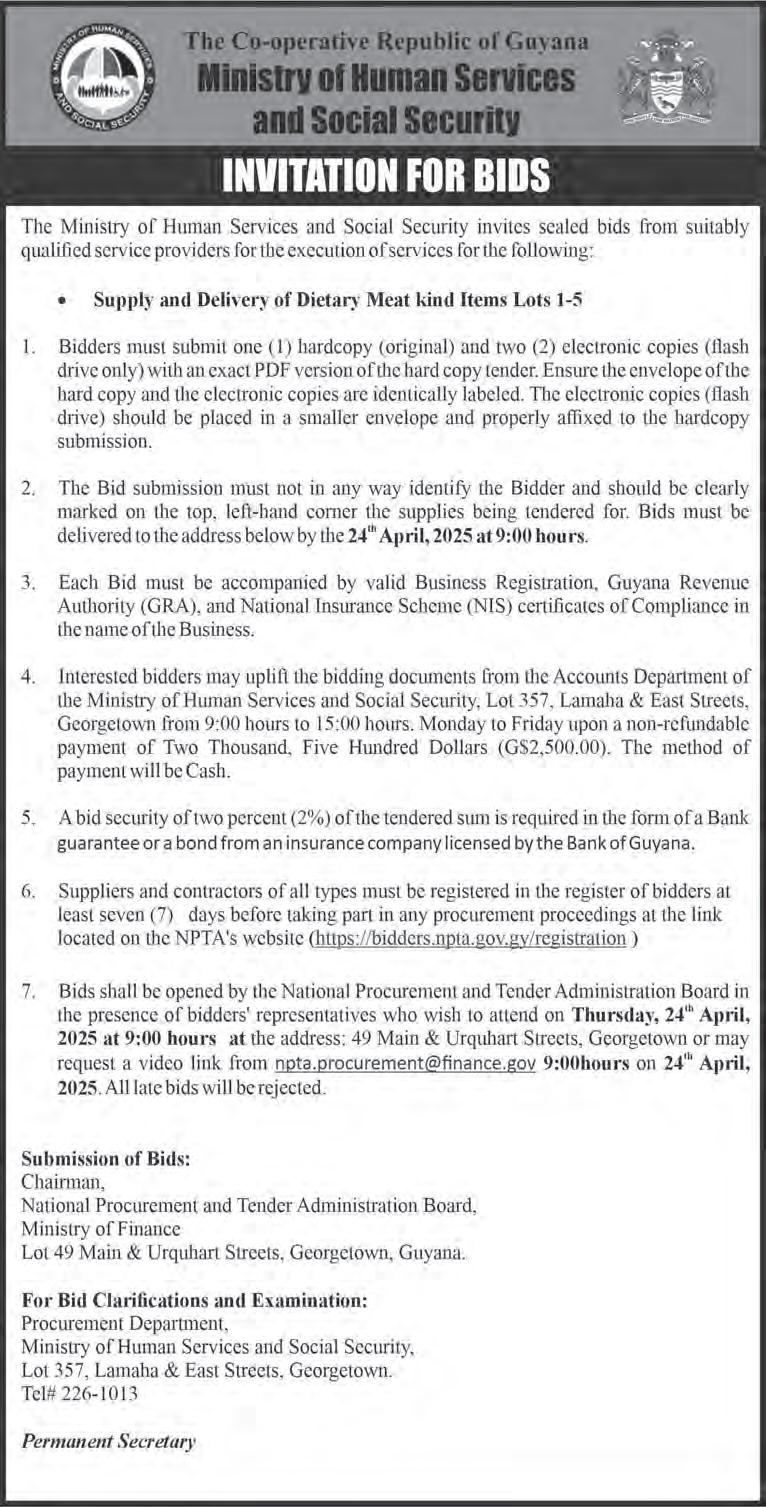
FROM PAGE XXXII
Justice of the USA, and his colleague High Court Judge, David Brewer, and their supporting legal team—Benjamin Harrison, Benjamin F. Tracy, James Soley and Severo Mallet-Prevost. Venezuela chose those distinguished jurists since there was no Venezuelan of equal calibre. Venezuela positively endorsed the legal team representing her case and could not claim she had no representation when this team were, in effect, her agents.
(ii) Venezuela asserts that it never accepted the Arbitral Award and the boundaries it set for Guyana. Venezuela's assertion belies the facts. Venezuela celebrated the Arbitral
Award as a victory, and there was much rejoicing in Caracas, and postage stamps were issued commemorating the event. The Venezuelan Ambassador to Britain at the time remarked that the Arbitration had assigned the Orinoco Delta to them and that was their main interest.
Further, in 1931, they participated in the ceremony held at Mount Roraima where the borders of Brazil, Venezuela and Guyana met, and Venezuelan maps delineated Guyana's pres ent boundaries. The first objection to Guyana's boundaries was made only in 1962.
(iii) Venezuela claimed that they had no part in demarcating Guyana's boundaries. The facts are
different: After the Arbitral Award was made, Venezuela insisted that the boundary be immediately demarcated, and between 1901 and 1905 Venezuelan and British surveyors demarcated the boundaries, wi th the joint paals still existing. Venezuela itself demarcated the boundary and could not truthfully deny that they did.
(iv) Venezuela claims that Guyana's Exclusive Economic Zone (EEZ) belongs to them, and Guyana-licensed prospectors for oil are operating in its EEZ and doing so illegally Guyana's EEZ is the sea contiguous to Guyana's landmass and is so recognised by international law and by all countries, and Venezuela knows this

but is traitorously trying to seize Guyana's territory and scare away investors. Finally, Venezuela is completely isolated, since Russia, China, and Cuba will not support her in the invasion of Guyana or seizure of Guyana's
territory, and, like a caged animal, is trying to bully Guyana into speaking with her to relieve the isolation and cause Guyana's friends and allies to drop their guard. President Ali, with great dignity, told President
Maduro that Venezuela has been carrying on continuous aggression against Guyana and has been ignoring the Argyle Declaration and could not dialogue in such a toxic milieu.
















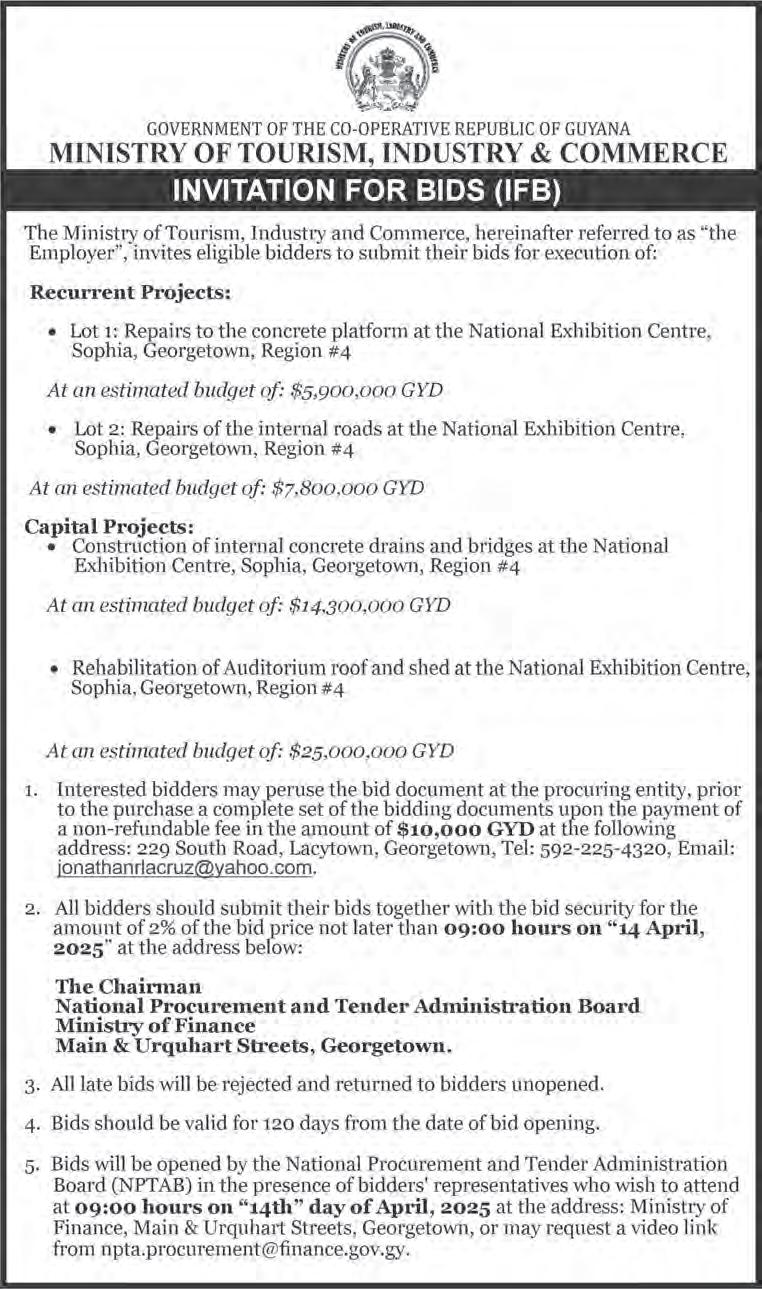















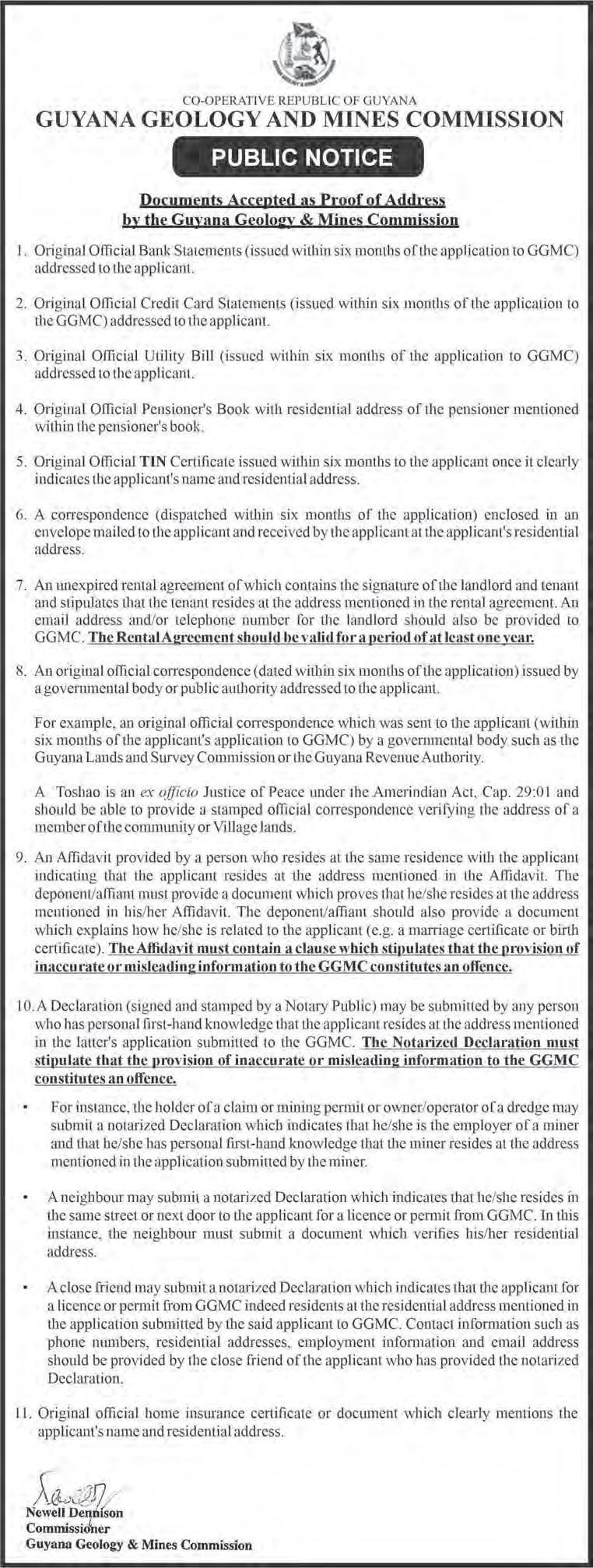















STUDY SUCCESS
Dear Student, Welcome, dear reading friend. The examinations you take at different levels should rightfully demand from you more specialist knowledge, understanding and expertise. But note, even if examinations become more technical and abstract in ideas and concepts, or demand greater specialisation and more use
April 6, 2025
Love you.
IMPROVING WRITING
Using dialogue in the short story
of jargon, they should not be deemed more difficult. Friend, only the unprepared and inexperienced would view successive examin ations as terrifying. C hoose your field of education and profession more carefully and study well. Be wise.

Note: Dialogue is conversation written in the exact words of the speaker in a story. A story may be told entirely in dialogue, but you are advised to use dialogue as part of your story. You must write mostly in Standard English for the examiner needs to be convinced that you know the language.
Anyway, you are permitted to use dialect in conversation. Note that a problem arises when you do not make sure that the ways in which people speak are consistent with their characters.
The way a person speaks, as well as what he or she says, can give the reader clues to character background and personality. So, if you do use dialogue, be certain that it helps to make your characterisation vivid and realistic. Use quotation marks to enclose a speaker’s exact words.
Read the two excerpts provided below to get a clear demonstration of dialogue use.
First Excerpt: Finally, the night was quiet except for Nita’s high-pitched sobbing. “You’ve killed my father!”
Sarah crept from the hall to the living-room window to see if her husband was all right.
There was the sound of crickets, then a hushed, “Open the door.”
Lee rushed in from his sanctuary behind the car. Sarah threw her arms around him. “You’ve got to stop now. It’s time to let somebody else do something.”
Lee held her by the shoulders and s aid, “That attitude is what’s wrong with West Perrine.”
No arrests were made.
Second Excerpt: The eviction crew works thoroughly, relentlessly. A coffee table sails out of the house, lands in the yard and breaks a leg.
“Stop it,” the owner screams. “I will call the police ... this is criminal. You must pay for this.”
H e struggles with
There is really no such thing as bad weather, only different kinds of good weather.
JOHN RUSKIN (1819-1900) Quoted by Lord Avebury
the hired hands, three convict-type bullies.
“You have broken my table, you .. you ..”
“We will fix that,” the landlord says from a distance. “Soon as you pay.”
“You have no right to raise the rent,” the tenant complains. “No right at all.”
Dressed only in a vest and pair of ragged trousers the bank clerk looks pathetically comical. They must have caught him in bed.
“You know how much tax I have to pay today?” the landlord argues. “And the price of water .. and the price of electricity .. and the cost of fuel to come here and collect? Then you talk of right, huh. The price of food?”
“I also eat,” the bank clerk complains.
“That is your problem,” the landlord shrugs. “Everyone else is paying the new rent,” his hands sweep round to indicate the stupefied onlookers and the double-locked doors.
When characters speak: There are rules that govern what is to be done when characters speak, and the story moves on.
1. The characters’ exact language should be in quotes, and the reader should know who is speaking, especially when there is a dialogue scene with a lot of information being passed on.
2. Each speaker gets his or her own paragraph; a return and indent. This mimics real conversation, indicating pauses and so forth.
3. Always use a comma at the end even if the line of dialogue sounds like a sentence, and punctuation always inside quotation marks.
Example: “She sorts out her garbage,” observed Desiree.
4. Punctuation must always be inside quotation marks: Gregory said, “I wish I had accepted her
wedding invitation.”
Example: “What’s wrong with you?” he asked.
5. Use “said,” “he said,” “she said,” and variations, but not too much. Do not make variations too repetitious. Use these ascriptions/ credits/ tags at the start of quotes, in the middle, or at the end. Do not overuse tags. They get in the way of the reader’s understanding about who is speaking. Observe that a comma is used after an ascription (She said,) when introducing a quote.
6. If the character is not tied to the quote, then the quote is a sentence, and the action is a new sentence.
Example: Desiree finished her sorting. “There it is.”
7. If you show who is talking in the middle of a quote, then the whole statement is one sentence.
E xample: “Can you imagine,” he said, “all the churches in the neighbourhood marching together . . .?”
What to Do:
1. Write a lively short story of your own choice. Proofread it for:
i) language used appropriately for your audience, purpose and content, ii) grammar, sentence structure, paragraphs, vocabulary, spelling and punctuation, iii) dialogue consistent with each character, helping to show what the speaker is doing, thinking, and feeling.
2. Allow your study partners to read your finished work and form a studied opinion of your writing and dialogue skills.
3. Listen to and note their comments carefully as discussion ensues.
4. Print and display your short story.

ANYONE who it has been established suffers from a faulty heart should first rinse the mouth thoroughly with a potent mouthwash such as chlorhexidine before having an extraction. Bacteria from the mouth can cause a damaged heart valve to become chronically infected, causing endocarditis, which kills a third of all its victims. It is quite probable that serious illness and death occur in patients who present with medical conditions which originated largely from some dental disease but which the attending physicians fail to identify as such. One typical example of this is a brain abscess developing from a necrotic tooth flare-up.
I have found that fit and healthy-looking patients attending the dental clinic for treatment sometimes have a serious systemic disease and are under drug therapy. Either or both can significantly affect the dental management or even the fate of the patient. In addition, in this country, patients are not accustomed to being questioned by a dentist about matters such as pregnancy and sexually transmitted diseases. Very often, since most patients are
fit and healthy, the dentist’s index of suspicion may not be significant.
But whatever the circumstances, the fact remains that any medical disorder or medication being taken should be reported to the attending dentist.
Corticosteroids can mask the presence of many serious diseases because they act by suppressing the effects of trauma and infection. If sedation or general anaesthesia is administered, there is rapidly developing hypotension (low blood pressure), collapse and death. Patients on, or who have been on, corticosteroid therapy within the past year are therefore at risk from adrenal crises if they are not given supplementary corticosteroids before and during periods of stress, including dental treatment.
Di abetes affects about four persons for every hundred in Guyana but is recognised in only half of those with the disease. The prevalence is only increasing, and it is, therefore, a relatively frequent problem in dental management. Dental disease and treatment may disrupt the normal pattern of food intake and can interfere with diabetic control, but a little forethought will prevent diabetics from
collapsing in the waiting room at lunchtime from hypoglycaemia caused by missing a meal. Treatment is best carried out just after breakfast and the normal anti-diabetic medication to allow the patient to eat lunch.
It is important to know whether a woman is pregnant since any dental procedure involving drugs, radiography (X-ray) or general anaesthesia is best left until after four weeks of conception. Radiography should be reduced to the absolute minimum. Although there is no known risk of abnormality from most drugs commonly used in dentistry, drug a dministration should also be done only when necessary. Besides, if a woman should give birth to a defective baby, no matter at what stage of the p regnancy the dentist had prescribed a drug, that dentist might very well run the risk of the woman blaming him for her misfortune.
In summary, it is prudent that patients should advise their dentist whenever they are currently under any type of medical treatment or have been diagnosed with a serious ailment. It is better to be safe than sorry.

